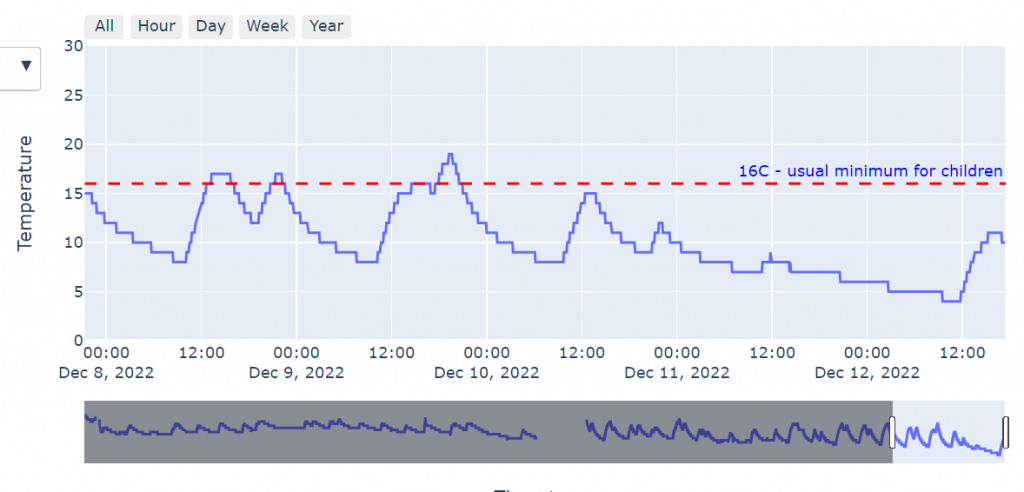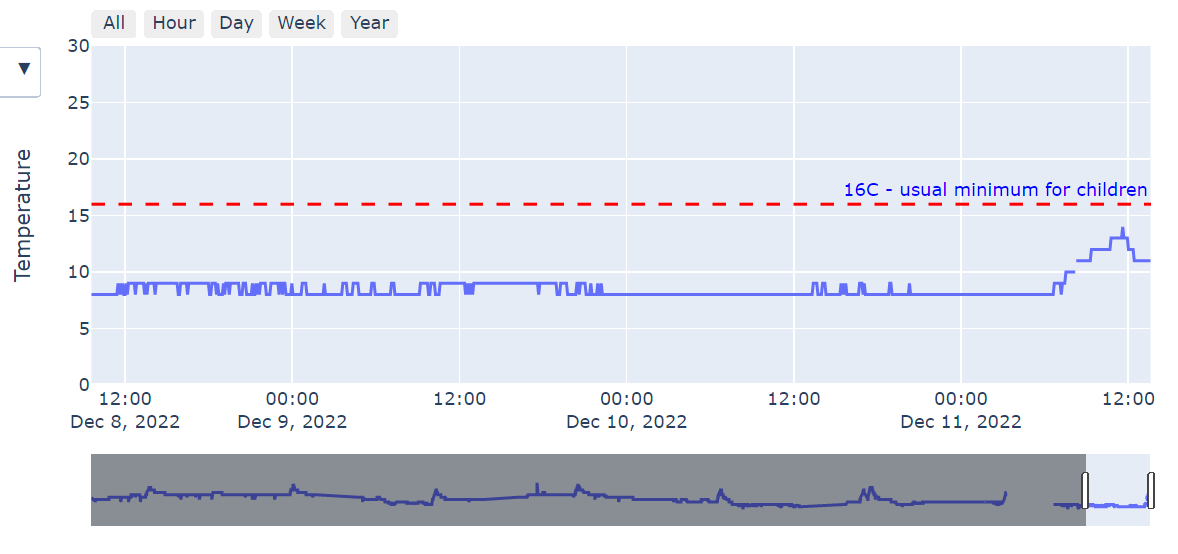We don’t want buildings to waste energy on heating when there aren’t people in to be made comfortable, but we don’t want them to suffer damage from being too cold, either.
This plot has a beautiful example of thermostatic control. The heating is “off”, but the controls let them specify a “setback” temperature. In this case it appears to be set to around 8C. The system will turn the heating on if the temperature inside the building drops below that, but only enough to maintain that temperature. This is good tight control. With an older analogue thermostat, you can expect a wider temperature variation around the setpoint.
In contrast, here’s another venue over the same time period:

This venue is in use most days. The heating comes on at the same time every day, but the colder it is outside, the lower the temperature sinks when the heating is off. The lowest point is 4C, and it’s surprising how quickly it gets there. We’ve checked and this venue does have a system that enforces a minimum temperature of 5C as registered on a thermostat somewhere, so it’s probably not going to drop much further. Others may not, and can go arbitrarily low.
Many controls default to 5C as the setback temperature. What minimum temperature your building needs depends on its construction and what it contains – it’s best to ask your architect. Insurers may have specific requirements as well. It’s always worth asking “why”, as advice has been known to vary with energy prices to some extent.
A general rule of thumb for churches with nothing particularly special in them appears to be 7-8C. The only rationale we’ve heard for this is that in the South of England, this is usually warm enough to greatly reduce the risk having condensation form on the stained glass windows and leach out the colours, as long as the building is kept dry and very well ventilated. The more technical answer is that at the very least, you want the building’s surfaces to stay above the dew point temperature, the temperature at which dew will form on the surface. The dew point temperature depends on the current temperature and relative humidity. At 4C and 61% RH – roughly the conditions of the building in the plot – the dew point temperature is -1C. That’s a pretty common temperature for the inside of a single-glazed window in the UK, even though no one likes to see ice on the inside. This kind of internal temperature is undesirable for other reasons too, of course, like protecting the plumbing.
We haven’t checked the various calculators for dew point temperature online, but it’s easy to find them and the underlying equations, if you want to think about this for your building.
